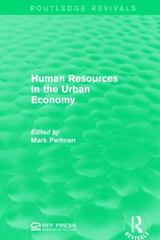Question
1. Explain what means that a resource allocation is efficient and describe the (marginal) conditions that such allocation will satisfy. Also define the concept of
1. Explain what means that a resource allocation is efficient and describe the (marginal) conditions that such allocation will satisfy. Also define the concept of perfectly competitive equilibrium and explain why, in principle, such market outcome should be expected to be efficient. Define the concepts of total surplus value, consumers' and producers' surplus, total and marginal benefit, total and marginal cost, supply, demand and competitive equilibrium as part of your answer.
2. Suppose that the marginal cost of extracting a non-renewable natural resource is MXC(Q) = 10 and the marginal benefit of using the resource is MB(Q) = 90-Q. In the context of a static model, address the following questions.
(a) Calculate the efficient value of Q if the total stock of the natural resource is Q = 50: Provide a graphical representation of the solution.
(b) Calculate the efficient value of Q if the total stock of the natural re source is Q = 200: Provide a graphical representation of the solution.
(c) Suppose that there is a market for the non-renewable natural resource in question. Which is the equilibrium price and quantity?
3. Address the following:
(a) Define the concepts of discount rate, discount factor and present value.
(b) Suppose that the allocation of a natural resource during three years results in a stream of total surplus value of $100 per period t (i.e.: t = 0, 1,2). Obtain the present value of this stream when the discount rate is r = 0:10 and also when it is r = 0.05.
(c) Alternatively, the resource could be fully extracted now (say, in the period t = 0), resulting in a total surplus $280 at t = 0 and 0 in every future period. Is this immediate extraction strategy preferred to the extraction strategy described in (a) when r = 0:10? What about when r = 0.05? What does this tell us about the intuitive meaning of discounting regarding intertemporal preferences?
(d) Explain what it means that a resource allocation is dynamically efficient.
4. Consider the intertemporal allocation of a non-renewable natural resource.
(a) Describe the (marginal) conditions that a dynamically efficient allo cation must satisfy, carefully describing the relevant opportunity cost of a resource unit at a given period (including both extraction and user costs).
(b) Will the intertemporal allocation of the resource by a perfectly competitive market be dynamically efficient? Why?
(c) Focusing on the case in which the marginal cost of extraction is 0, argue that the intertemporal price path will satisfy the Hotellings Rule, relying on a no-arbitrage argument to justify it. Will the corresponding path of quantities extracted increase or decrease over time?
(d) Based on the Hotellings Rule, we might expect the price of non renewable resources to increase continually over time, as resource stocks are depleted. However, empirical evidence for a number of mineral resources suggests that prices have not been increasing monotonically over the past century. Try to explain this apparent anomaly between theory and observation.
5. Consider the following two-period model of dynamically efficient extraction of a non-renewable natural resource. The constant social marginal cost of extraction is 40 in each period and the total stock of the resource is Q = 300 units. Moreover, the social marginal benefit is MB(Qt) = 200Qt, where Qt is the quantity of resource extracted in period t, for t = 0; 1. The discount factor is 0:8.
(a) What is the efficient quantity of resource extracted in each period? Provide a graphical representation of the solution.
(b) What is the marginal user cost (or scarcity rent) of the resource in each period?
(c) Suppose that there is a market to trade the resource. What is the equilibrium price corresponding to each period? Justify the answer.
(d) Suppose that it is now expected that because of an extraction technology improvement, while the worst period marginal cost of extraction will still remain MXC1 = 40, the second period one will now de crease to MXC2 = 20. Answer the previous questions (a)-(c) under this alternative premise.
(e) How will the answers to questions (a)-(c) change if, because of new discoveries, the known reserves of the natural resource become Q = 400 (30 marksK).
Step by Step Solution
There are 3 Steps involved in it
Step: 1

Get Instant Access to Expert-Tailored Solutions
See step-by-step solutions with expert insights and AI powered tools for academic success
Step: 2

Step: 3

Ace Your Homework with AI
Get the answers you need in no time with our AI-driven, step-by-step assistance
Get Started


